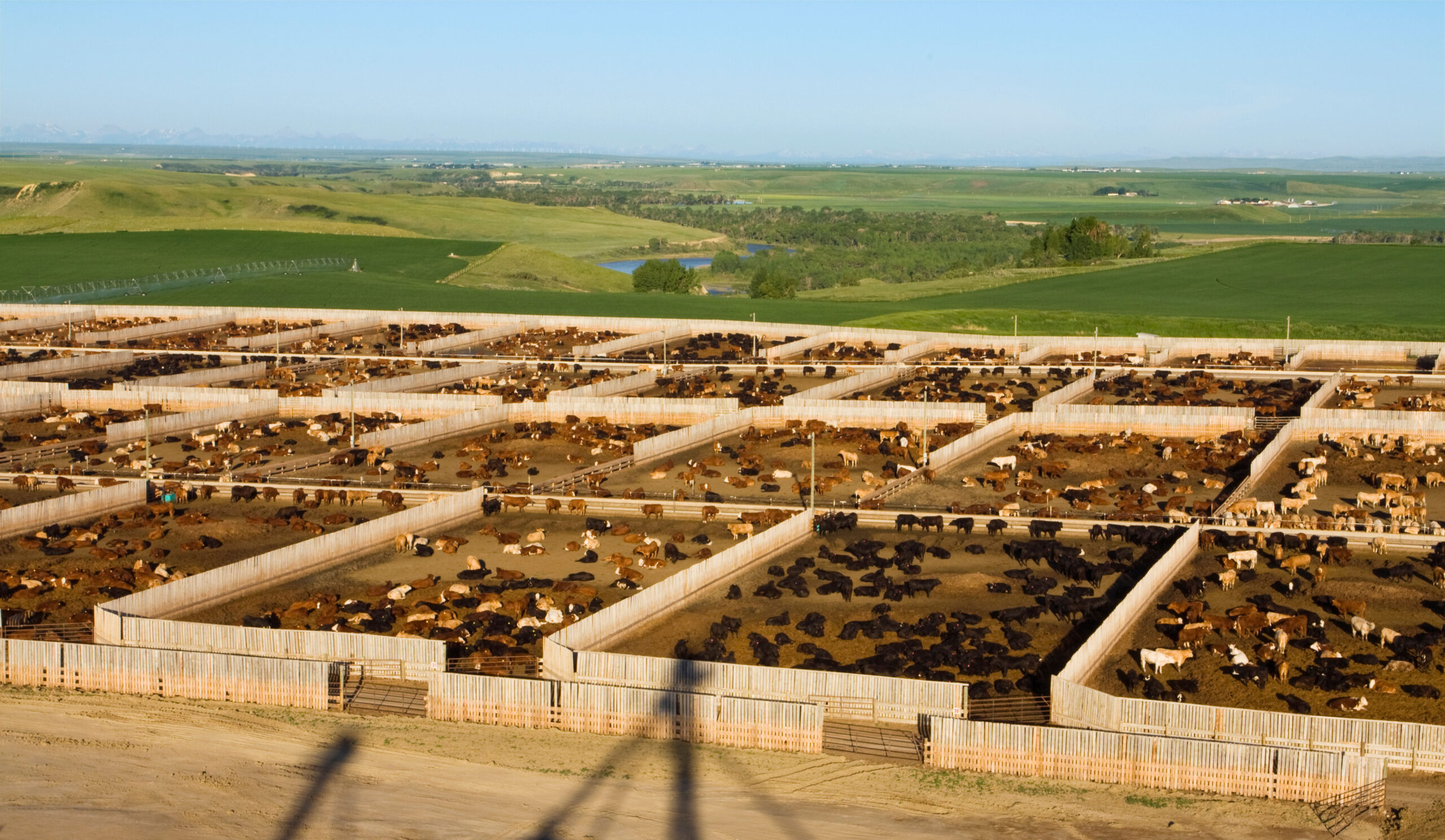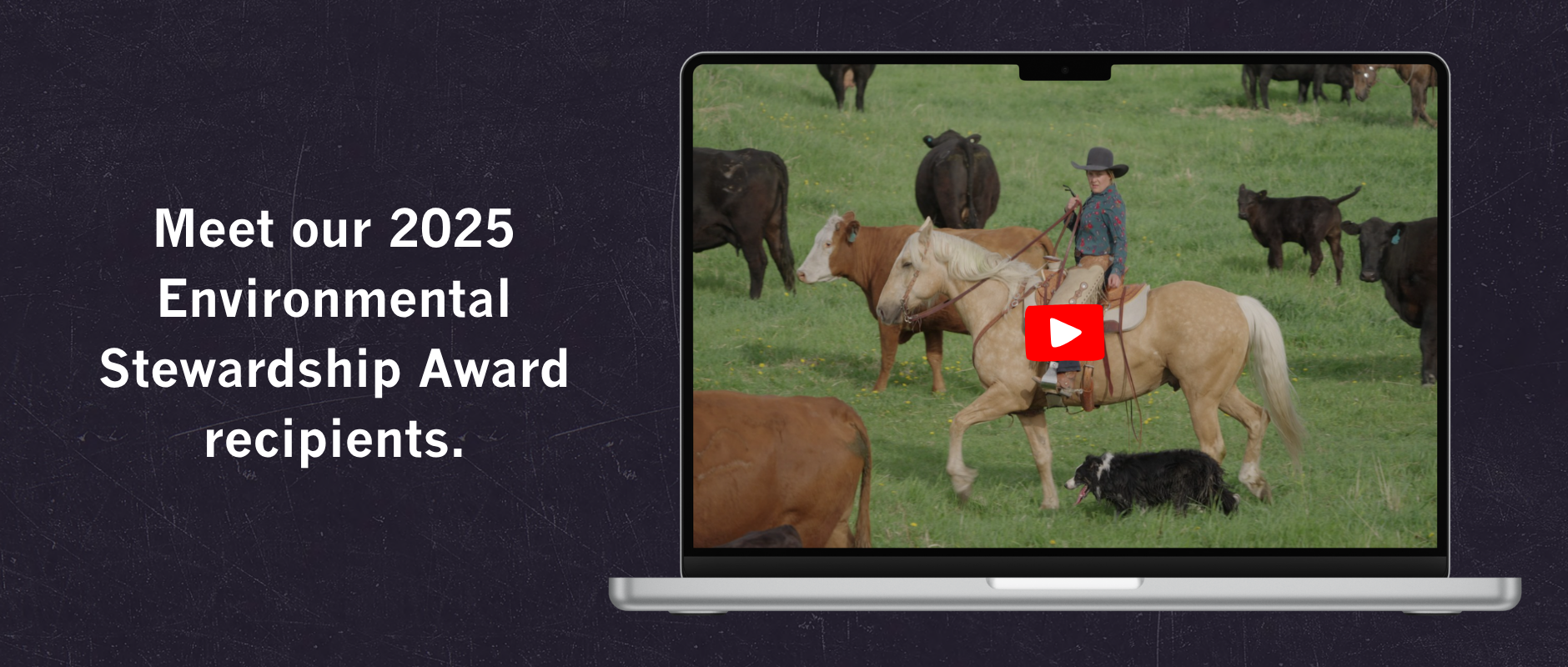AB Direct - Steers
Rail: ---
AB Direct - Heifers
Rail: ---
US Trade- Steers
Rail: ---
US Trade - Heifers
Rail: ---
Canadian Dollar
0.18

Keep calves healthy to help prevent histophilosis
Diseases caused by the bacteria called Histophilus somni are a silent killer increasing in occurrence in Alberta feedlots. Prevention through good animal husbandry is the first line of defense, both on the ranch and in the feedlot.
Some feedlots in Alberta have seen a rising number of deaths caused by histophilosis in recent years. “Histophilosis has reared its ugly head at my feedyard again this year—this is some of the worst I’ve seen,” says Lyle Adams, owner of 6A Cattle Co at Picture Butte. Adams runs a finishing operation with about 8,000 head of cattle. He custom feeds, so mortality affects both his profitability and his customers’.
“In my yard in the last few years, histophilosis has been one of the biggest economic deterrents to profitability,” he says.
There are different strains of Histophilus somni, which manifest differently with varying levels of severity. Myocarditis, an infection of the heart muscle, is one of the most common manifestations seen currently, according to Bruce Hill, veterinarian with Sunny South Veterinary Services. Other lesions seen post-mortem include pleuritis, an infection of the external lining of the lungs, and pericarditis, an infection of the heart lining.
Calves affected by histophilosis often die suddenly without prior illness. “We’ve had some cattle that look good and full in the pen, not showing any signs of sickness, yet they end up dead,” says Adams.
The larger the feedlot, the greater the increase in histophilosis prevalence. “In feedlots placing calves during the fall, it can represent anywhere from 10 to 25 per cent of all animal deaths by the end of the feeding period, equating to an overall mortality rate of 0.25 to 0.8 per cent,” says Hill.
The bacterium Histophilus somni lives in the upper respiratory and reproductive tract of healthy cattle and does not normally cause disease unless the body’s defense system is impaired by stress. As Hill says, “Histophilosis only becomes a problem when cattle are stressed out so, from that perspective we need to consider: How can we minimize stress?”
Stress factors are particularly high in fall-placed calves, especially those not weaned prior to transport.
“They come into the feedlot where they’re commingling from multiple sources, they are not acclimatized to the feed bunk or where the water is, and they’ve just come off a truck. All these factors add stress,” says Hill.
Precondition on the ranch
Given all these stress factors, it’s not surprising that the occurrence of histophilosis is highest in November and December, when feedlots are bringing in large volumes of fall-placed calves and there are stresses like weaning, transportation and commingling. It is shed through nasal secretions and urine, so it’s more likely to spread between animals commingling in feedlot pens.
“Like any respiratory disease, infected animals shed the bacteria histophilus and, if another animal has a compromised immune system, they get it too,” says Hill. “We need to focus on reducing stressors and helping support a strong natural defense mechanism through good animal husbandry practices.”
Hill recommends producers work with their herd veterinarian to develop sound preconditioning strategies, including vaccination protocols, low-stress handling methods, stocking density plans and animal health monitoring systems.
Tommy Ware, veterinarian and partner with Veterinary Agri-Health Services at Crossfield, also supports preconditioning. “Preconditioning calves on the ranch may reduce the risk of histophilosis, but it’s hard for ranchers to justify it when they don’t get paid for it. Incentivizing that would help feedlots tremendously, and there’s ample research that it would improve respiratory health outcomes,” says Ware.
The recommended preconditioning process includes vaccinating and pre-weaning calves on the ranch.
“The best research I’ve seen in terms of health outcomes would be pre-weaning vaccinations, weaning the calves on the ranch using a low stress method like fenceline weaning, and then holding them for 45 days prior to shipment,” suggests Ware.
Weaning on-ranch prepares calves to find food in a bunk and use a waterer before they are challenged by the feedlot environment, which significantly reduces stress, he adds.
Research continues in western Canada
In the feedlot environment, one practice used to reduce overall Bovine Respiratory Disease (BRD) morbidity and mortality is medicating feed with chlortetracycline.
“There is little published evidence right now showing that this practice specifically reduces histophilosis mortality,” says Hill.
Compounding the problem, the vaccines currently on the market were developed historically to reduce infectious thrombo-meningoencephalitis (ITME, or more commonly known as Sleeping Sickness). They have little effect on reducing myocarditis, pleuritis or arthritis caused by histophilus. “We need a new effective vaccine,” Hill adds.
Adams agrees. “If we could see a new vaccine for histophilosis on the market, it would be a game changer for the feedlot sector.”
In fact, researchers in western Canada are working on it. Joyce Van Donkersgoed, veterinarian, researcher and extension practitioner, is coordinating the collection of samples for a research project led by the Vaccine and Infectious Disease Organization (VIDO) at the University of Saskatchewan to support the development of a new histophilosis vaccine.
“It’s a frustrating disease because the bacteria are currently smarter than we are,” says Van Donkersgoed. “We can’t medicate our way out of it because the bug becomes resistant, and we don’t currently have a good vaccine on the market for the multisystemic form, so hopefully the current research will find something that works.”
The VIDO research project is focused on isolating and characterizing more recent strains of Histophilus somni, including the strain that causes myocarditis, in hopes of developing a new effective vaccine. “There is a lot of research to be done, and it’s going to take a few years, but we hope to identify some important antigens for a subunit vaccine,” says Van Donkersgoed.
Practice good husbandry at the feedlot
Ranch preconditioning helps ensure healthy calves enter the feedlot, but once they’re in, it’s important that feedlot operators take steps to minimize stressors that contribute to diseases like histophilosis.
“Vaccines are important but they’re only an aid in the situation; they’re not a cure all,” says Ware.
“Husbandry is even more important—making sure pen conditions are good, that we’re getting cattle on feed, and that there is lots of bedding for cold winter days. It’s important to create an environment that is as low stress as possible.”
Van Donkersgoed cautions against vaccinating any animal that isn’t healthy, which points to the importance of thorough health checks.
“I’m a believer in antigen overload. The immune system can only handle so much, and if the animal is already stressed, the last thing you want to do is hit them with a lot of antigens. I would never vaccinate an animal when they are sick,” she says
Get advice from your herd vet
Whether it’s on the ranch or in the feedlot, working with a veterinarian is important to support good husbandry practices and herd health strategies throughout the life cycle. It won’t prevent histophilosis in every case, but it definitely helps.
“We know we’re going to lose some cattle to histophilosis. We know we can’t save them all,” says Adams. “But when we look at what these cattle are worth today, we need to try to do something.”
This article was first published in Volume 5 Issue 1 of ABP Magazine (February 2025). Watch for more digital content from the magazine on ABP Daily.


